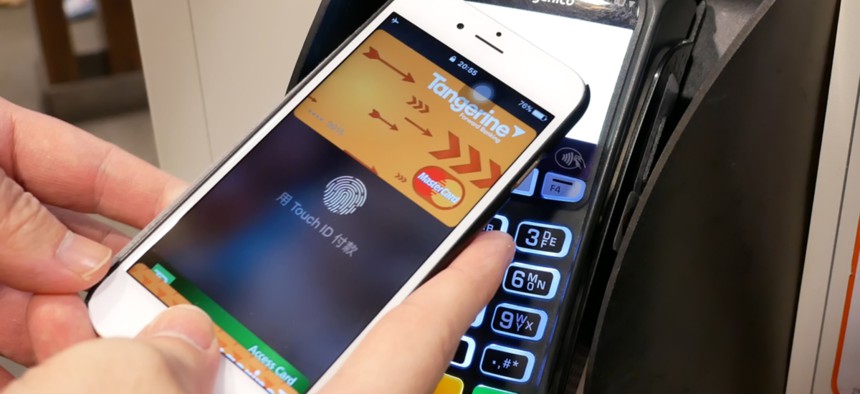Digital Wallets Could Become as Big a Selling Point for Phones as Cameras And Displays

Icatnews/Shutterstock.com
Mobile wallets are catching on around the world.
It’s been nearly four years since Apple CEO Tim Cook unveiled Apple Pay, and there are signs the mobile wallet is finally gaining steam—especially outside the U.S. These days, Apple has nearly six times as many international users for its payment service as it does in its home market. The growth highlights that mobile wallets are catching on around the world, even as how we pay things remains fragmented and culturally specific.
International users of the trillion-dollar company’s payment service have increased about 700% in the past two years, to 214.7 million as of June, according to Loup Ventures. In the U.S., the number of Apple Pay users has risen 45%, to 37.9 million, over the same span. The service is available in 24 countries, giving Apple an addressable market of about 2.7 billion consumers, according to Loup’s estimates.

Digital wallets will, one day, be important to mobile phone buyers in the same way that slick displays and cameras are today, according to Gene Munster, an analyst at Loup. The company projects that 80% of global smartphone users will eventually use their phone as a wallet, compared with less than 20% now.
Apple Pay hasn’t been an instant hit. Not everyone is comfortable with the technology or cares to change how they do things. There are rival services from Google, Facebook, Square, and Samsung, as well as wallets for specific retailers like Walmart and Starbucks. But Apple has become more aggressive in nudging iPhone users to use Apple Pay through its operating system and its messenger app, Munster said. Its policy of not selling its customers’ personal data could also be a selling point, and its control over its own operating system could make for a better service.
A potential boon for Apple is that banks are steadily adopting its payment service, so that it works with a wide range of credit and debit cards. Adoption has grown the most in the Europe: Since December 2016, the number of lenders that support the service has increased 370%, compared with 141% in Asia and 55% in the U.S. and Canada. Some 3,149 banks have adopted Apple Pay, according to Loup’s data.

Future growth isn’t assured. Apple Pay will be available in Germany—famous for consumers’ preference for cash—later this year. China was added in 2016, but that market is dominated by WeChat and Alipay.
While growth in the U.S. has flattened, Munster said he expects the number of users to creep higher over time, such that some 80% of American iPhone owners will eventually use it. China will be “tougher,” Munster says: Apple may only secure a small share of smartphone users there, but given the market’s size it could still be enough to rival the number of Apple Pay users in the U.S.





